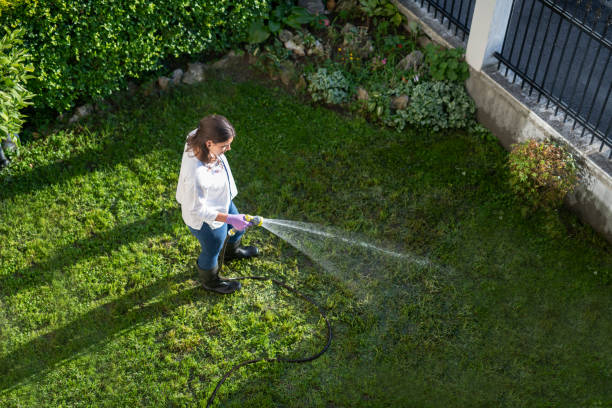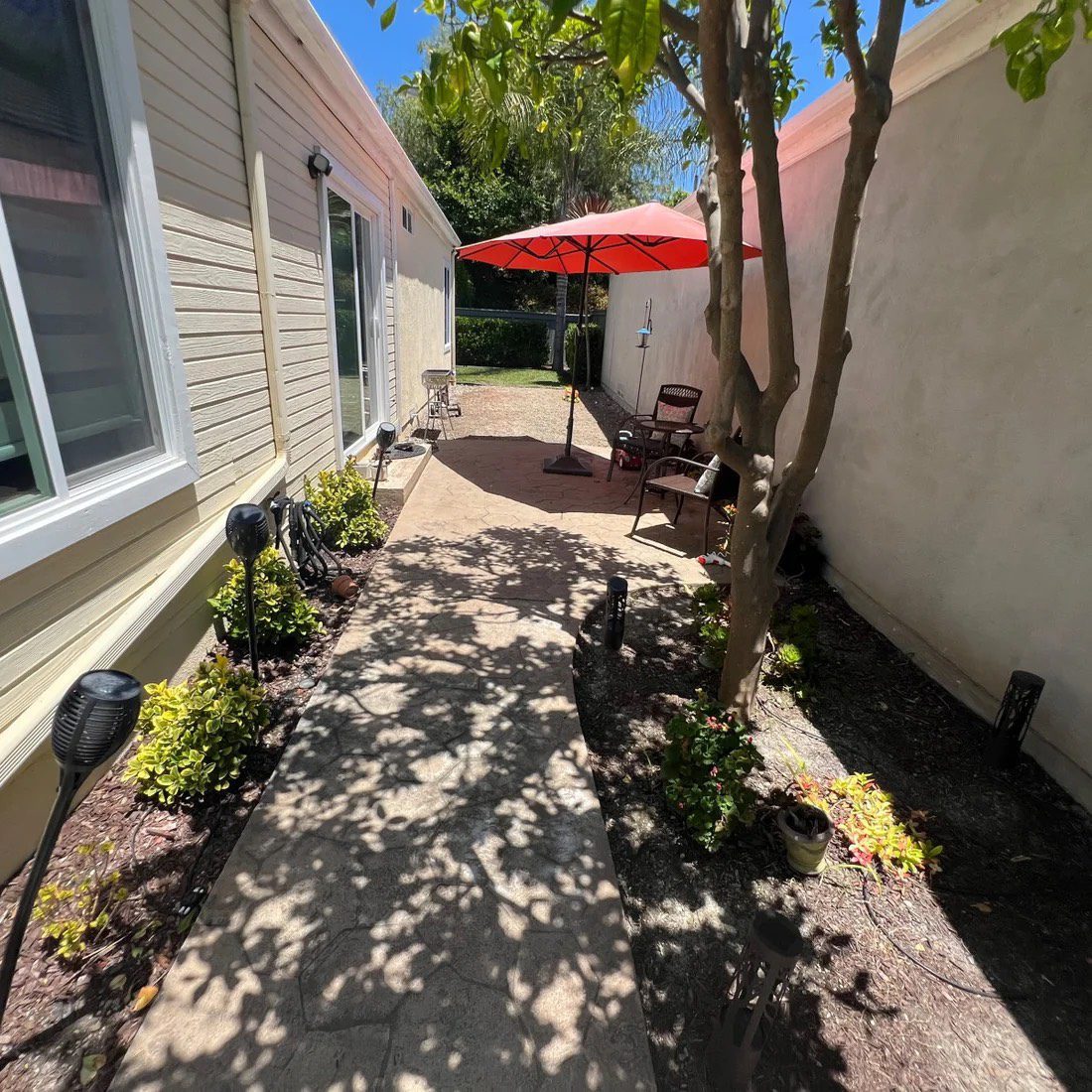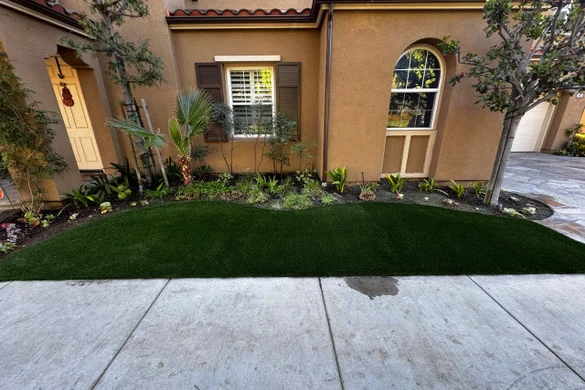Best Practices for Caring for Your Lawn Turf: A Guide for Orange County Homeowners
Maintaining a beautiful lawn in Orange County’s unique climate can be a rewarding endeavor. However, it requires a strategic approach to ensure your turf thrives year-round. This guide will delve into the best practices for lawn turf care, covering everything from proper watering and mowing to fertilization and pest control, all tailored to the specific needs of Orange County homeowners. Whether you’re planning a backyard renovation or simply aiming to enhance your front yard’s curb appeal, mastering these techniques will help you achieve a stunning and healthy lawn.
Get Free Estimate
Fill the form & we will call back!
Understanding Orange County's Climate and Its Impact on Your Lawn
Orange County’s climate is characterized by warm, dry summers and mild, wet winters. This Mediterranean climate significantly influences your lawn’s health and maintenance requirements. Understanding these nuances is crucial for implementing effective best practices for lawn turf care.
- Summer Challenges: The intense heat and lack of rainfall during summer months can lead to drought stress, causing your turf to brown and thin.
- Winter Considerations: While winters are mild, excessive rainfall can lead to waterlogging and fungal diseases.
- Soil Types: Orange County soils can vary, ranging from sandy to clay-rich. Understanding your soil type is essential for proper nutrient management and drainage.
Key Components of Best Practices for Lawn Turf Care
Proper Watering: The Foundation of Healthy Lawn Turf Care
Effective watering is paramount for maintaining a healthy lawn. Overwatering and underwatering can both be detrimental. Here’s how to optimize your watering practices:
- Deep and Infrequent Watering: Water deeply and less frequently to encourage deep root growth. Aim for about 1-1.5 inches of water per week, depending on the weather.
- Timing is Crucial: Water early in the morning to minimize evaporation and reduce the risk of fungal diseases.
- Sprinkler System Optimization: Ensure your sprinkler system provides even coverage and adjust watering schedules based on seasonal changes. Smart sprinkler controllers that utilize weather data can be a great investment.
- Watering during drought: During the dry seasons, it is important to follow any watering restrictions imposed by the local water authorities.
- Rain Sensors: Installing rain sensors will prevent over watering during the rainy season.

Mowing Techniques: Maintaining a Healthy Turf Height
Correct mowing practices are essential for promoting healthy turf growth and preventing weed proliferation.
- Mow High: Maintain a mowing height of 3-4 inches. This helps shade the soil, retain moisture, and suppress weed growth.
- Sharp Blades: Use sharp mower blades to ensure clean cuts, which promote faster healing and reduce stress on the grass.
- Mowing Frequency: Adjust mowing frequency based on the growth rate of your turf. During peak growing seasons, you may need to mow weekly.
- Grass Clippings: Leave grass clippings on the lawn. They act as a natural fertilizer, returning valuable nutrients to the soil. This is a very important part of the best practices for lawn turf care.
Fertilization: Nourishing Your Lawn for Optimal Growth
Proper fertilization provides your lawn with the essential nutrients it needs to thrive.
- Soil Testing: Conduct a soil test to determine the specific nutrient deficiencies in your lawn. This will help you choose the right fertilizer.
- Seasonal Fertilization: Fertilize your lawn in the spring and fall, when it’s actively growing. Use a slow-release fertilizer to provide a steady supply of nutrients.
- Organic Fertilizers: Consider using organic fertilizers, which improve soil health and reduce the risk of chemical runoff.
- Avoid Over-Fertilizing: Over-fertilizing can lead to excessive growth and make your lawn more susceptible to diseases.

Aeration and Dethatching: Promoting Healthy Soil and Root Development
Aeration and dethatching are essential for maintaining healthy soil and root systems.
- Aeration: Aerate your lawn annually or biannually to relieve soil compaction and improve air and water penetration.
- Dethatching: Remove excessive thatch (a layer of dead grass and debris) to prevent it from suffocating your lawn. This is very important to do in the best practices for lawn turf care.
- Timing: The best time for aeration and dethatching is during the active growing season.
Pest and Disease Control: Protecting Your Lawn from Threats
Orange County lawns can be susceptible to various pests and diseases.
- Integrated Pest Management (IPM): Implement an IPM approach, which focuses on prevention and uses chemical treatments as a last resort.
- Common Pests: Be vigilant for common pests like grubs, chinch bugs, and sod webworms.
- Fungal Diseases: Watch for signs of fungal diseases, such as brown patch and dollar spot, especially during periods of high humidity.
- Preventive Measures: Maintain a healthy lawn to reduce the risk of pest and disease problems.
- Professional Help: For serious infestations or diseases, consult a professional lawn care service.

Choosing the Right Turf for Orange County
Selecting the appropriate turfgrass for Orange County’s climate is crucial for long-term success.
- Warm-Season Grasses: Choose warm-season grasses like Bermuda, Zoysia, or St. Augustine, which are well-suited to the region’s climate.
- Drought-Tolerant Varieties: Consider drought-tolerant varieties to minimize water usage.
- Sun and Shade: Take note of what parts of the yard get full sun, and what parts are in the shade, and choose the grass that will thrive in each area.
- Consulting with Experts: Local nurseries and lawn care professionals can provide valuable advice on selecting the best turfgrass for your specific needs.
Seasonal Lawn Care: Adapting to Orange County's Changing Conditions
Adapting your lawn care practices to the changing seasons is essential for maintaining a healthy and vibrant lawn.
- Spring: Focus on fertilization, aeration, and weed control.
- Summer: Prioritize deep watering and maintain proper mowing height.
- Fall: Aerate, overseed, and fertilize to prepare your lawn for winter.
- Winter: Minimize watering and avoid heavy foot traffic to prevent damage.

Enhancing Your Backyard and Front Yard Renovations with Healthy Turf
A healthy lawn significantly enhances the aesthetic appeal of your backyard and front yard renovations.
- Creating a Focal Point: Use healthy turf as a focal point in your landscape design.
- Adding Value: A well-maintained lawn increases property value.
- Outdoor Living Spaces: Create inviting outdoor living spaces with lush, green turf.
- Curb Appeal: A beautiful front yard significantly increases curb appeal.

Conclusion: Achieving a Thriving Lawn in Orange County
By implementing these best practices for lawn turf care, you can achieve a lush, vibrant lawn that enhances the beauty and value of your Orange County home. Remember to adapt your practices to the specific needs of your lawn and the changing seasons. With consistent care and attention, you can enjoy a beautiful and healthy lawn for years to come.

